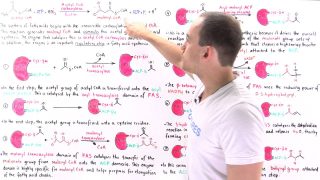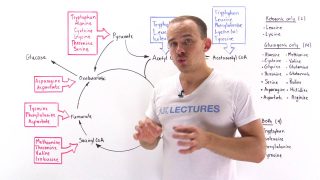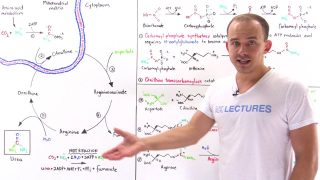Steps of Glycolysis Reactions – Animation
Glycolysis (glycose = glucose, -lysis = degradation) is the metabolic pathway that converts glucose, into pyruvate. The free energy released in this process is used to form the high-energy compounds ATP (adenosine triphosphate) and NADH (reduced nicotinamide adenine dinucleotide). Glycolysis is a determined sequence of ten enzyme-catalyzed reactions. The intermediates provide entry points to glycolysis. […]
Steps of Glycolysis Reactions – Animation
Other Videos You Might Like:
Subscribe
Login
0 Comments




